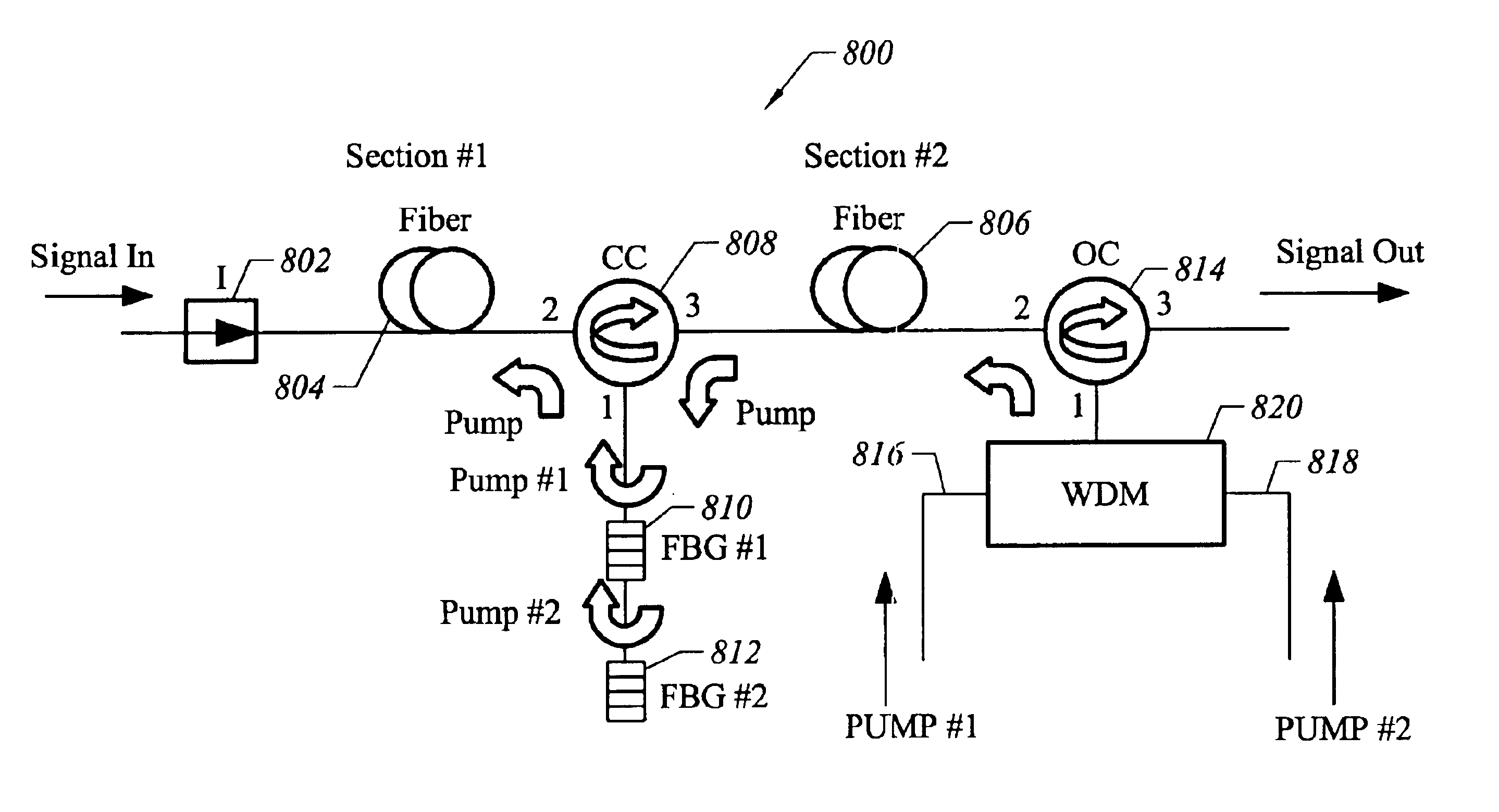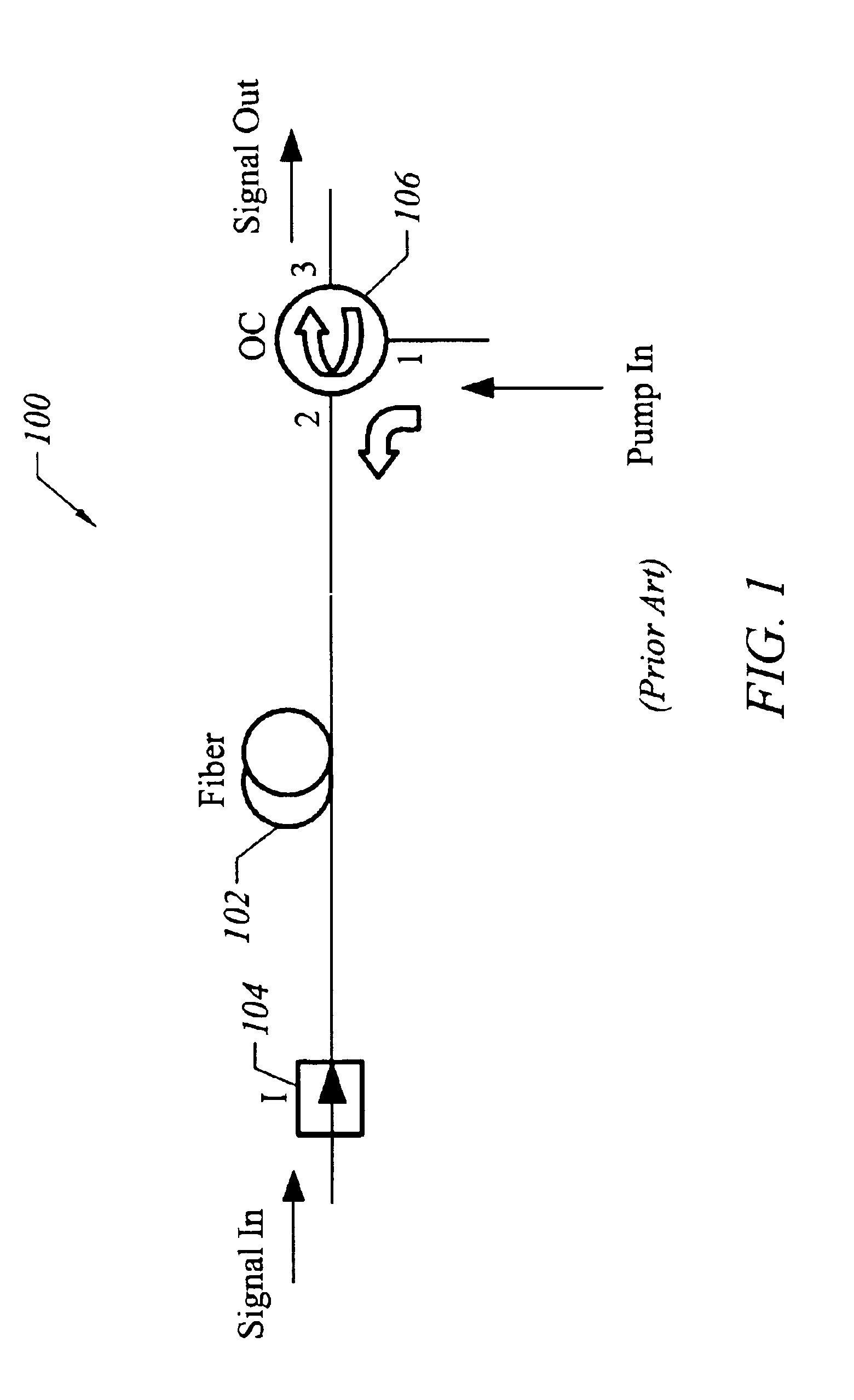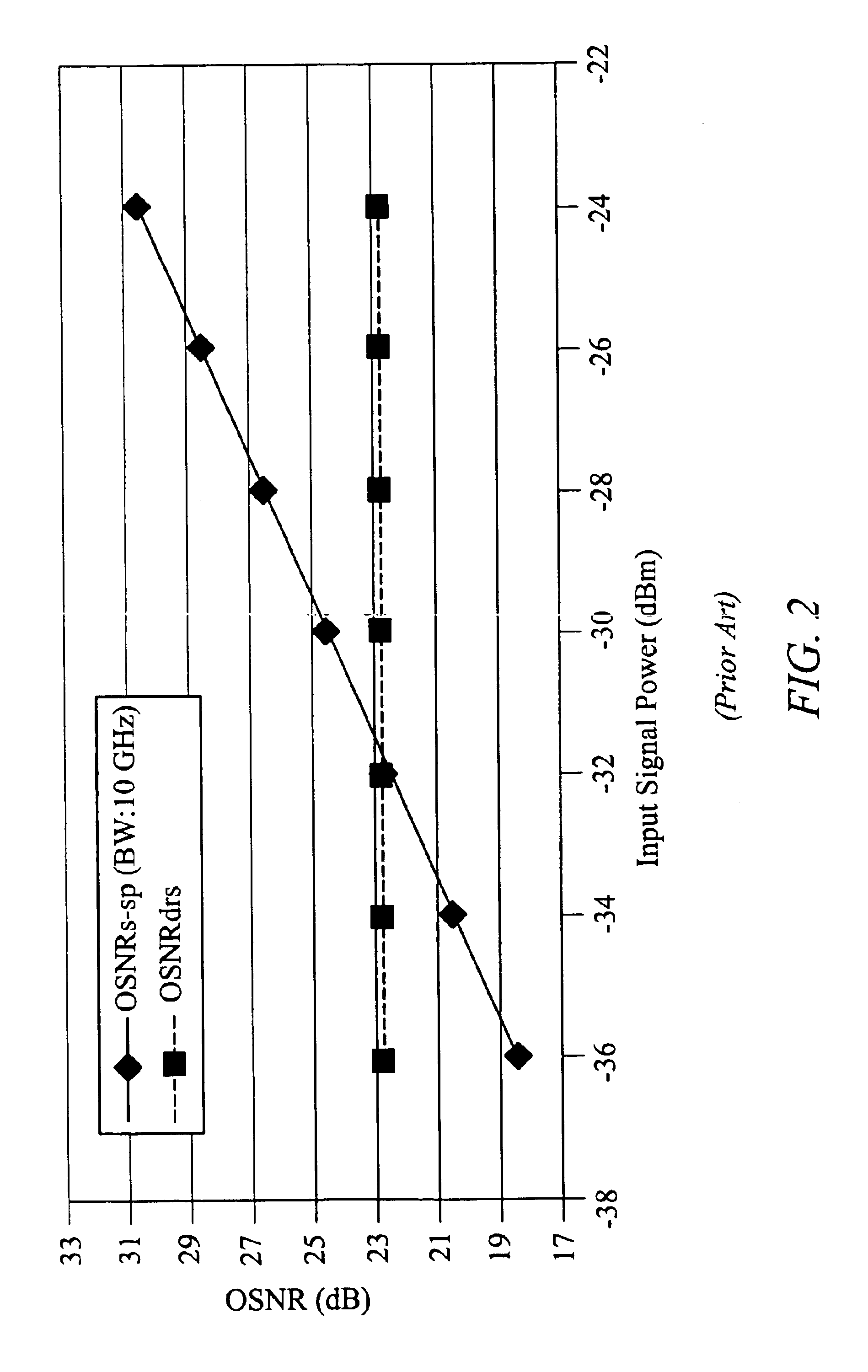Suppression of double rayleigh backscattering and pump reuse in a raman amplifier
a raman amplifier and amplifier technology, applied in the field of optical communication systems, can solve the problems of double rayleigh backscattering of the signal resulting from amplification, the limitations of edfa technology are limited, and the expansion of the bandwidth limitations of existing communication systems, so as to achieve low loss and low loss
- Summary
- Abstract
- Description
- Claims
- Application Information
AI Technical Summary
Benefits of technology
Problems solved by technology
Method used
Image
Examples
Embodiment Construction
Raman Amplification Overview
FIG. 1 illustrates a representative Raman amplifier 100 employing a counter-propagating pump. Raman amplifier 100 includes a spool of fiber 102, an optical isolator 104 and an open circulator 106 (depicted as “OC”). A WDM coupler may substitute for open circulator 106. The signal enters Raman amplifier 100 through optical isolator 104 and is amplified while traveling along fiber spool 102 by pump energy originating with a laser pump (not shown) via stimulated Raman amplification. The pump energy, which is inserted through port 1 of circulator 106, should be at a wavelength about 100 nm below the signal wavelength to maximize amplification efficiency for standard telecommunication transmission fibers. Optimal efficiency is obtained by employing fiber with a small effective area and high Raman gain coefficient, for example, dispersion compensating fiber (DCF). Although Raman amplifiers may employ both co-propagating and counter-propagating pumping schemes, ...
PUM
 Login to View More
Login to View More Abstract
Description
Claims
Application Information
 Login to View More
Login to View More - R&D
- Intellectual Property
- Life Sciences
- Materials
- Tech Scout
- Unparalleled Data Quality
- Higher Quality Content
- 60% Fewer Hallucinations
Browse by: Latest US Patents, China's latest patents, Technical Efficacy Thesaurus, Application Domain, Technology Topic, Popular Technical Reports.
© 2025 PatSnap. All rights reserved.Legal|Privacy policy|Modern Slavery Act Transparency Statement|Sitemap|About US| Contact US: help@patsnap.com



